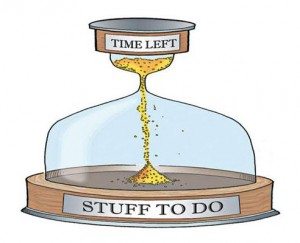Happy New Year!
Nothing much changes from year to year, when it comes to making resolutions. Each year the following resolutions are most popular:
- drink less alcohol
- get a better education or job
- eat healthy food / get fit / lose weight
- manage debt /stress
- quit smoking
- go green
- save money
- volunteer to help others
In a study published in the American Journal of Health, researchers at the University of Missouri found that, after looking at over 99,000 participants, any method that utilizes recording and tracking activity and results significantly provided motivation for improvement. No matter your personal resolutions, remember that you can make resolutions at any time- it doesn’t have to be January 1st– it can be today!
Resolutions: Most of us make them.
To be successful, we need goals, or rather, SMART goals. SMART stands for specific, measureable, attainable, realistic, and timely. So, if you have a resolution or goal you want to accomplish, it’s time to take out a pen and paper and write it down.
- Specific: Instead of saying “I want to get fit”, a specific goal would be something like “I will do 30 minutes of walking on Mondays, Wednesdays, and Fridays”. Being less vague will help you pinpoint what activities you can perform, with whom, and at what time or on what days, to be successful in accomplishing your goal.
- Measurable: It’s important to have a starting point and a way to measure the results. For example: “I will start walking around the block every Monday, Wednesday, and Friday. In 1 week, if I have comfortable walked around the block on those days; I will walk around 2 blocks on Mondays, Wednesdays, and Fridays. I will continue to add blocks until I have walked for at least 30 minutes on Mondays, Wednesdays, and Fridays.” At the end of each deadline, you will better be able to see results and decide if you need to make adjustments to your goal.
- Attainable: It’s important to choose a goal that is attainable for your unique needs and desires. It can be easy to open up magazines, watch television, or hear from a friend about the latest health trend that is or isn’t working for someone else and want to jump in. The example I have used above may be attainable or easy for some and maybe only a starting point for others. You should consider your attitude about certain activities and motivation as some may enjoy walking while others enjoy running while others enjoy swimming while others prefer to lift weights or go to an aerobics class. If you don’t enjoy the activity, your chances of success could be much lower. The same can be said about your limitations; if you have a health condition that prevents certain activities, it is important to seek out those you enjoy and can perform without risk of hurting yourself.
- Realistic: Goals need to be realistic or you are setting yourself up for failure. Instead of aiming for a radical change, you can plan small, attainable goals with reasonable deadlines that will allow you to reward your progress and motivate you to keep going. For example, if you’ve only ever enjoyed walking/jogging a few miles a day, it wouldn’t be wise to sign up for a marathon within a month. Instead, a more realistic goal for someone who walks/jogs for run, but who is considering a marathon at some point, could start off with smaller goals of running 1 mile, then 3, then 5 over months until, eventually, their goal of running a marathon can be achieved safely.
- Timely: Your resolutions and goals need to have a timeline. Both the short-term goals and the long-term goal should have deadlines to measure your progress against. Without a sense of deadline, one can lose their motivation to ‘get fit someday’ when instead, they can eventually ‘walk 30 minutes a day on Mondays, Wednesdays, and Friday in 2 months’.
Only you can decide your goal and how SMART it is going to be for you. To help you out, you can use a worksheet, such as the one provided to better help you achieve your goals in 2019!
|
SMART GOALS |
||||
| What do you want to achieve? | Specifics:What? Where? Why? Who? | MeasurableHow much? How often? How many? | Achievable? How important is this goal to you? |
TimeDate you plan to complete your goal by? |
ON THE SIDE: January is Folic Acid Awareness Month.
- Foods high in folate include leafy greens such as spinach, citrus fruit, dried beans, legumes, nuts, and enriched products.
- Folic acid is important for women of child-bearing ages to protect against neural tube defects.
- The recommended amount for women of child-bearing age is 400mcg of folic acid. High doses may have negative health impacts. Remember! Moderation is key.
=====================================================
Recipe of the Month:
Steal-cut Chai Oatmeal (Serves 2)
Want to spice up your oatmeal without taking up time in the morning? Check out this twist:
1 cup steel-cut oats
1 cup milk
2 Tbs. chia seeds*
1/4 tsp. ground cardamom
1/4 tsp. vanilla extract
1/4 tsp. ground ginger or
1 Tbs. crystallized ginger
1/4 tsp. ground cinnamon
1 pinch nutmeg
1 pinch black pepper
1 Tbs. maple syrup, optional
1 Tbs. each topping of choice: shredded coconut, pistachios, nuts
Consider topping with additional fruits such as dried figs or bananas
*Interesting tidbit: chia seeds, which are becoming popular as of late, are an excellent source of fiber, antioxidants, calcium, protein, and omega-3-fatty acid.
DIRECTIONS
1. Combine oats, milk, chia seeds, cardamom, vanilla, ginger, cinnamon, nutmeg, black pepper, and maple syrup (if using) in glass jar with lid. Stir, close lid, and refrigerate overnight.
2. Open lid, stir, and sprinkle with coconut and pistachios, if using.
Per 1-cup serving:
| Calories | 400 |
| Protein | 16g |
| Total Fat | 10g |
| Saturated Fat | 2g |
| Carbs | 69g |
| Cholesterol | 0mg |
| Sodium | 62mg |
| Fiber | 13g |
| Sugar | 8g |
Fitness Corner
Eating breakfast and working out in the morning can help rev up your metabolism to burn more calories throughout the day. By waking up both your mind and body with movement and nourishment, you may have more energy to be more productive. Why? Physical movement can better oxygenate the brain which enhances energy production. Working out in the morning can help you burn more calories throughout the day; researchers at Appalachian State University, NC found that cyclists who biked for 45 minutes burned an extra 190 calories after they finished exercising. Researchers indicated that the metabolism appeared to be boosted for up to 14 hours post-workout. Now that is an effective way to work hard now and reap the benefits later!
Wishing you a successful year…






